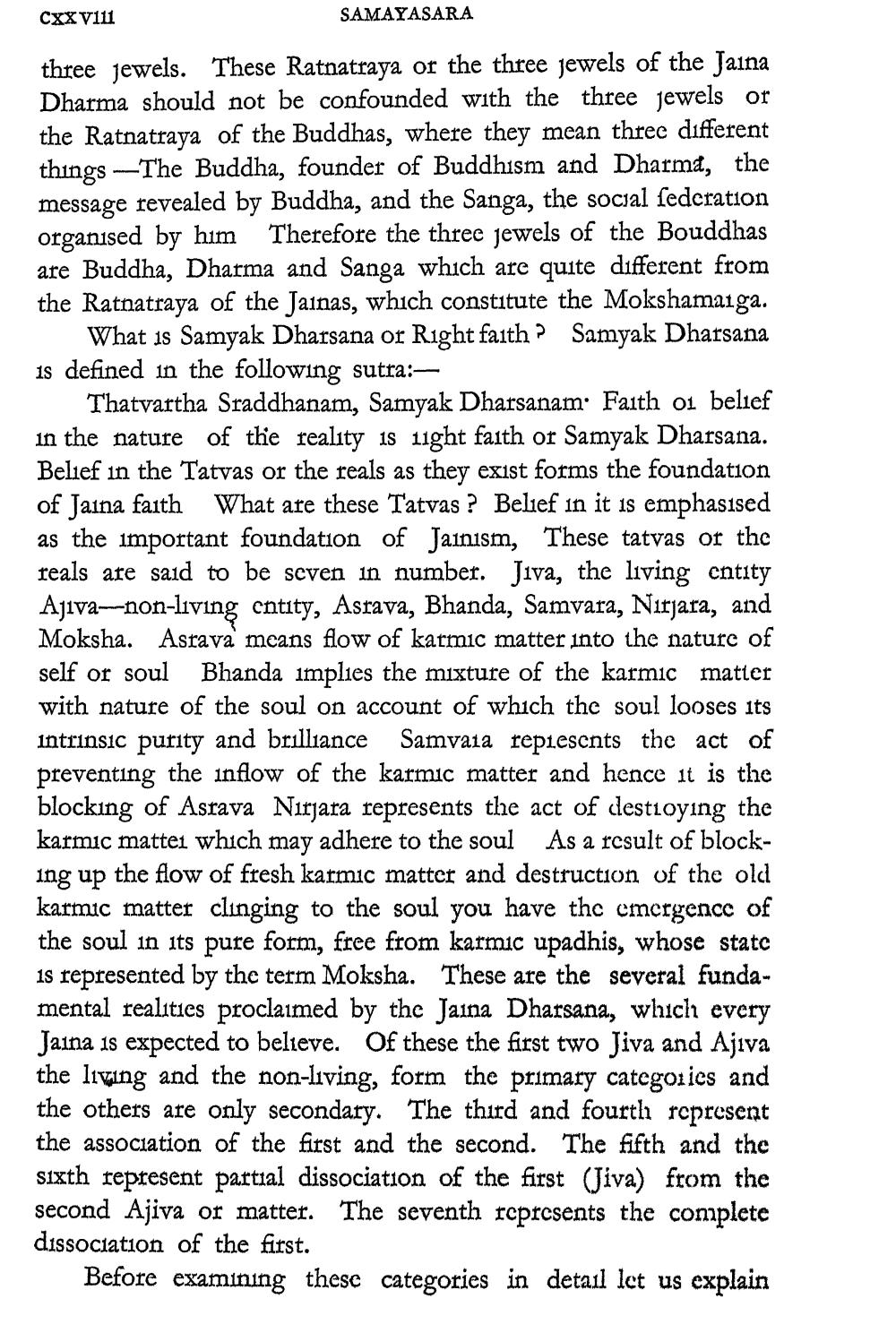________________
CXXV111
SAMAYASARA three jewels. These Ratnatraya or the three jewels of the Jaina Dharma should not be confounded with the three jewels or the Ratnatraya of the Buddhas, where they mean three different things -The Buddha, founder of Buddhism and Dharmd, the message revealed by Buddha, and the Sanga, the social federation organised by him Therefore the three jewels of the Bouddhas are Buddha, Dharma and Sanga which are quite different from the Ratnatraya of the Jainas, which constitute the Mokshamaiga.
What is Samyak Dharsana or Right faith? Samyak Dharsana is defined in the following sutra:
Thatvartha Sraddhanam, Samyak Dharsanam. Faith ou belief in the nature of the reality is light faith or Samyak Dharsana. Belief in the Tatvas or the reals as they exist forms the foundation of Jaina faith What are these Tatvas ? Belief in it is emphasised as the important foundation of Jainism, These tatvas or the reals are said to be seven in number. Jiva, the living entity Ajiva-non-living cntity, Asrava, Bhanda, Samvara, Nirjara, and Moksha. Asrava means flow of karmic matter into the nature of self or soul Bhanda implies the mixture of the karmic matter with nature of the soul on account of which the soul looses its intrinsic purity and brilliance Samvaia repiesents the act of preventing the inflow of the karmic matter and hence it is the blocking of Asrava Nirjara represents the act of destioying the karmic matter which may adhere to the soul As a result of blocking up the flow of fresh karmic matter and destruction of the old karmic matter clinging to the soul you have the emergence of the soul in its pure form, free from karmic upadhis, whose stato is represented by the term Moksha. These are the several fundamental realities proclaimed by the Jaina Dharsana, which every Jaina is expected to believe. Of these the first two Jiva and Ajiva the living and the non-living, form the primary categories and the others are only secondary. The third and fourth represent the association of the first and the second. The fifth and the sixth represent partial dissociation of the first (Jiva) from the second Ajiva or matter. The seventh represents the complete dissociation of the first.
Before examining these categories in detail lct us explain




